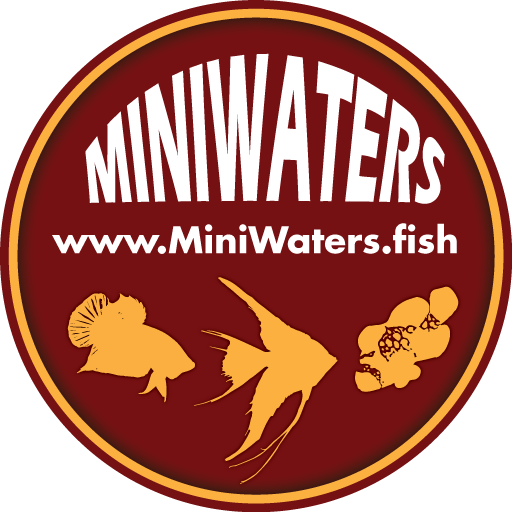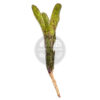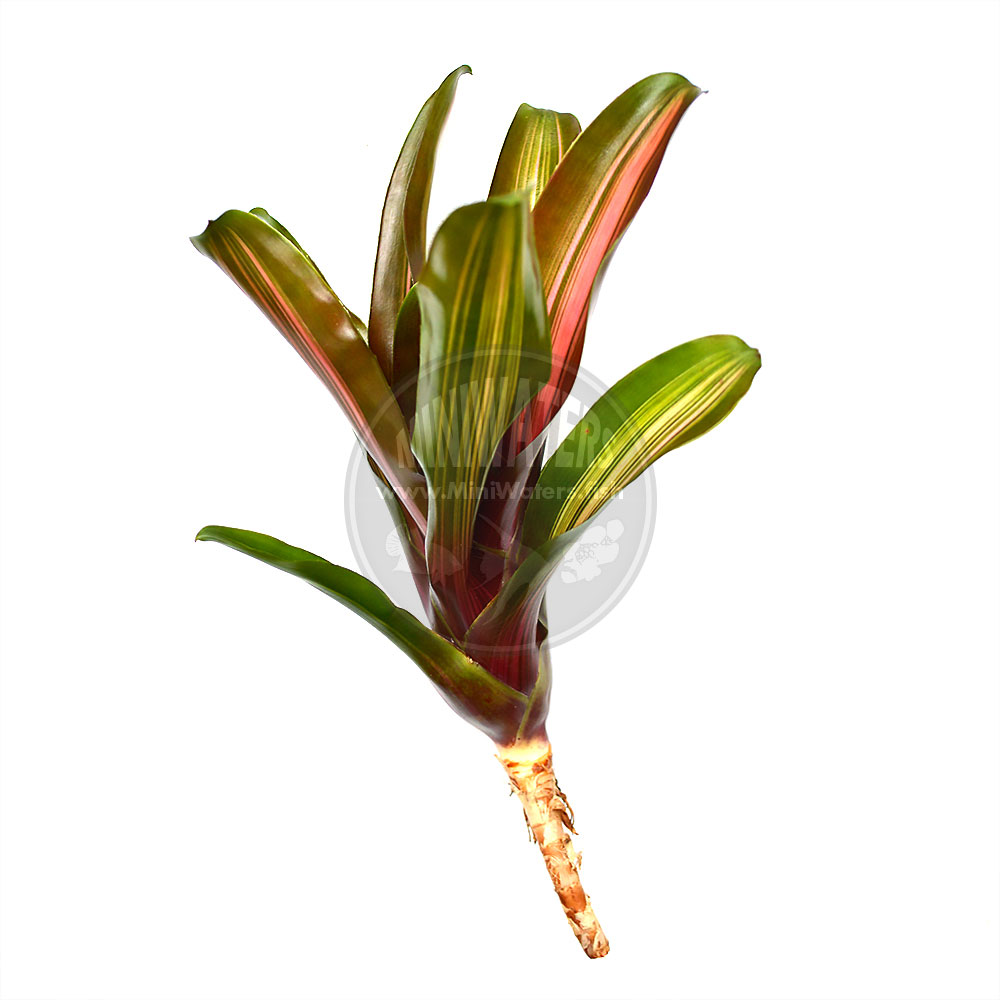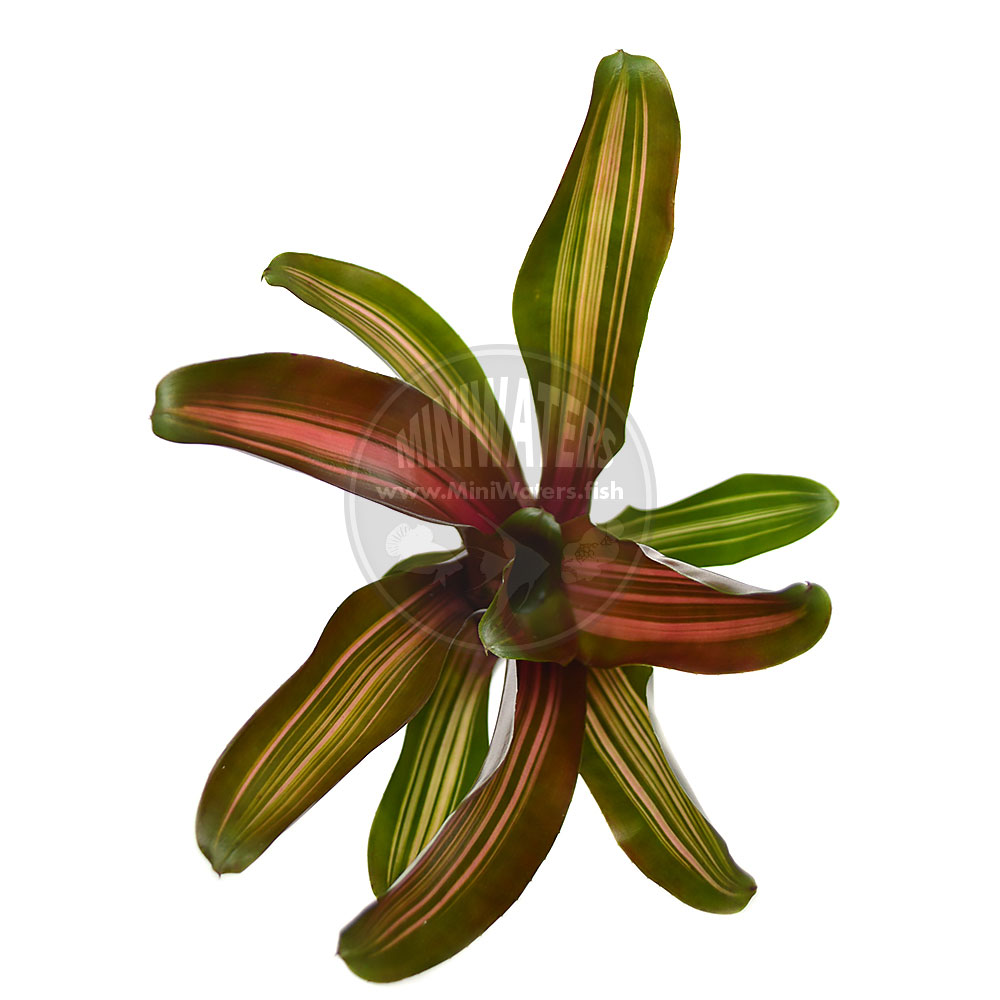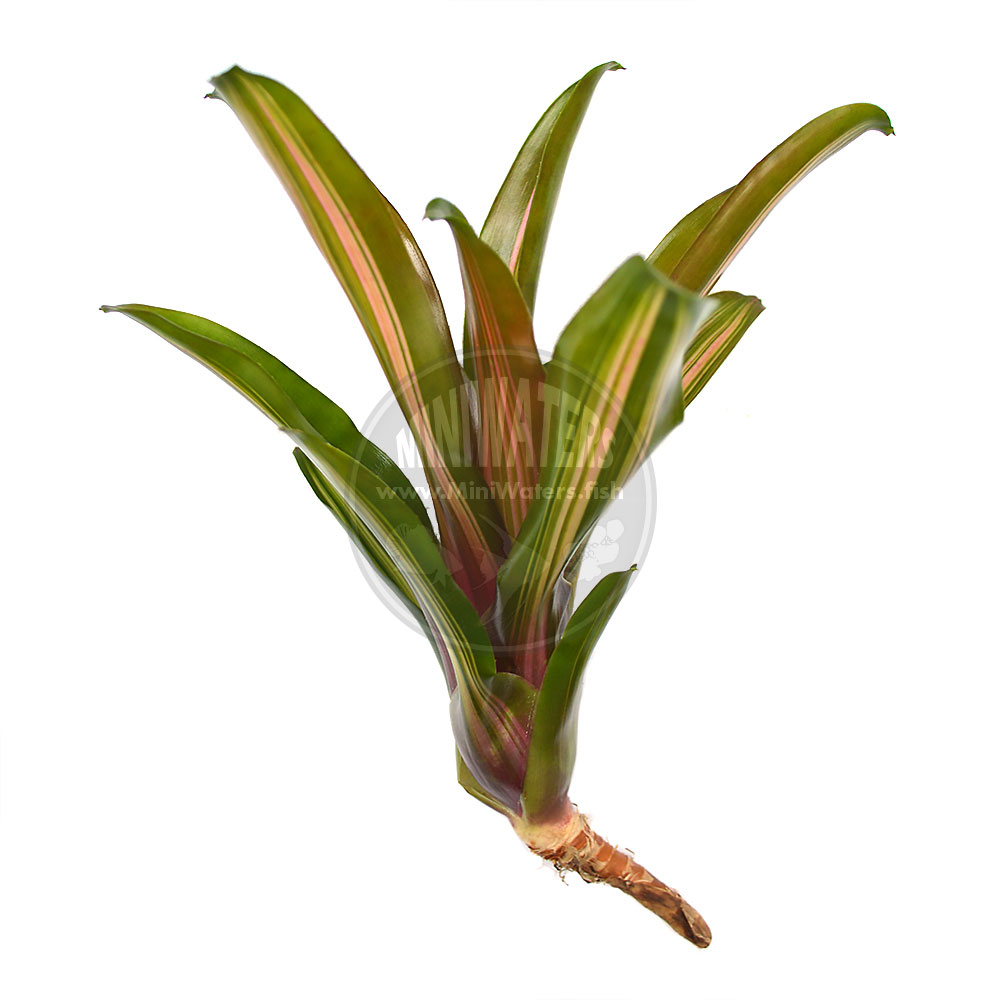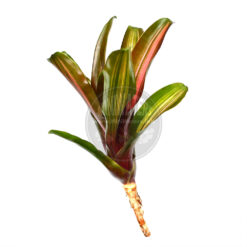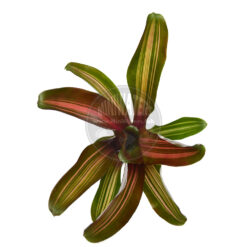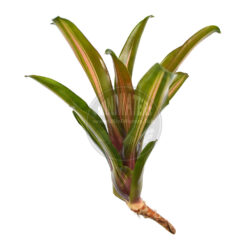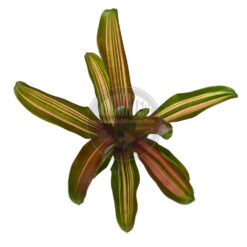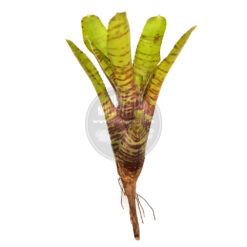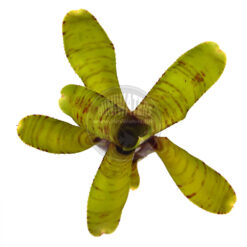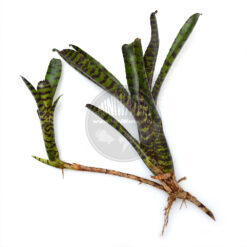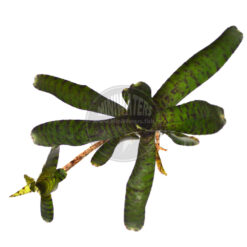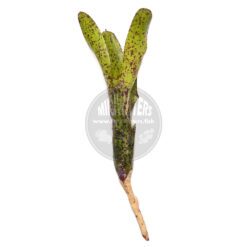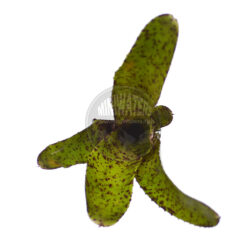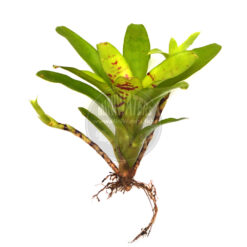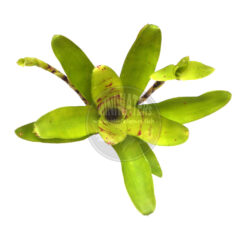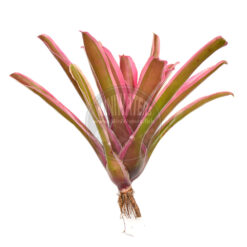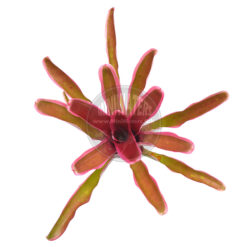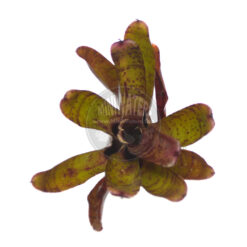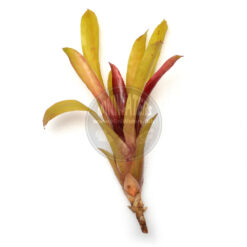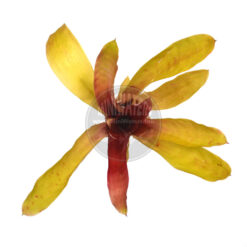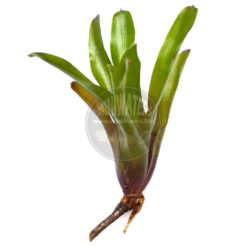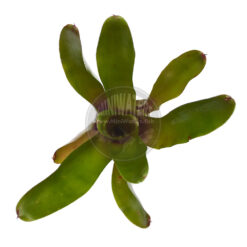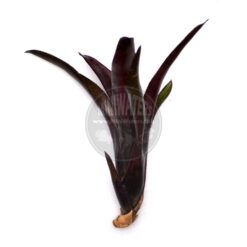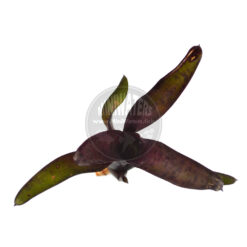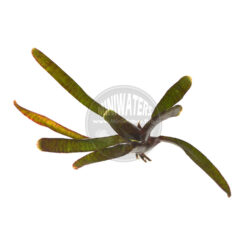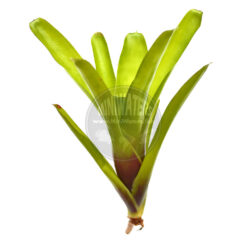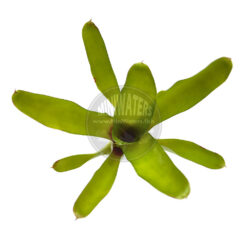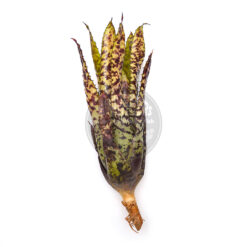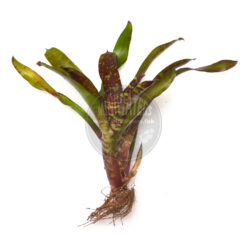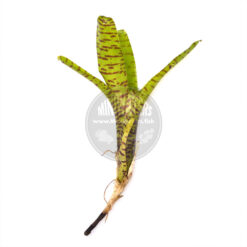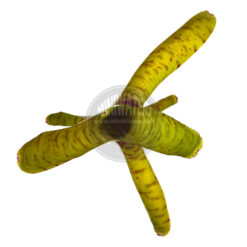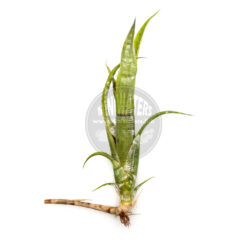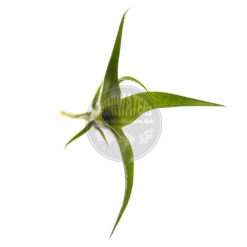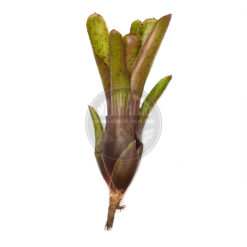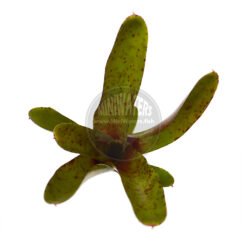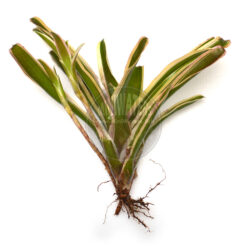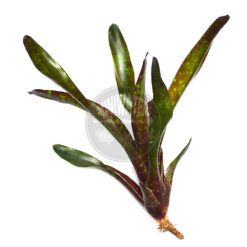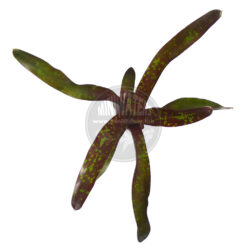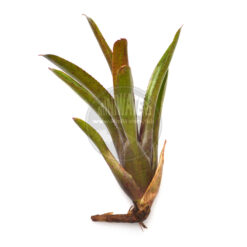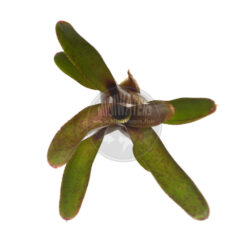Neoregelia Zoe
$12.00 – $15.00Price range: $12.00 through $15.00
Neoregelia Zoe is a small, stoloniferous hybrid that is similar to Fireball, but variegated. Given that its parentage is ((carolinae lineated x Fireball) x Fireball), in other words 75% Fireball, the similarity should be no surprise. This plant grows offsets on stolons that are several inches in length. In low light, this plant will be green with white variegation, but in higher light levels the variegation turns pink.
Description
Neoregelia Zoe is a small, stoloniferous hybrid that is similar to Fireball, but variegated. Given that its parentage is ((carolinae lineated x Fireball) x Fireball), in other words 75% Fireball, the similarity should be no surprise. This plant grows offsets on stolons that are several inches in length. In low light, this plant will be green with white variegation, but in higher light levels the variegation turns pink.
A bit of horticulture trivia: This bromeliad protected by a plant patent ( USPP12,107) which prevented unlicensed propagation during the term of the patent. Plant patents expire 20 years after their filing date; Zoe’s patent application was filed on April 2, 1999, and as such, the patent expired on April 2, 2019. As such, Zoe is now considered in the public domain and may be freely propagated by anyone without the need for license or royalty payments.
General Neoregelia Care Information
Summarizing many different sources, Neoregelia Bromeliads are usually grown mounted (epiphytically), although they can be potted in well-draining substrates. There are many ways to mount a bromeliad, the main goal is to prevent movement until new roots can firmly anchor the plant.
On the whole, these tropical plants appreciate humidity and tropical temperatures. Their central “tank” or water storage cup should be periodically flushed with fresh water. They also appreciate air movement. Strong lighting and minimal nutrient availability produces the best color (aka. “growing hard”); coloration will vary in the plants you receive and will change depending on your growing conditions.
Bromeliads produce “pups”, asexually-produced new growths on stolons which ultimately grow into another mature plant. Individual Neoregelia growths can last up to 3-4 years; they will bloom only once (typically small purple flowers that are held within the central cup), and start to fade and die thereafter, leaving behind their pups. Buying pups means the plants you receive are younger and will last longer, while larger plants offer instant gratification and will get you to the pupping stage sooner. General recommendations are that pups should not be removed until they are half the size of the mother plant, and removing pups can encourage more to be produced during the lifespan of the mother plant.
About MiniWaters Vivarium Plants
Any plant whose cultivation condition is denoted as “sanitized” has been put through MiniWater’s bleach treatment and have been held in animal-free conditions following this treatment. While we do not guarantee our plants to be disease and pest free, we believe we are offering the lowest-risk plants possible. We encourage all customers to sanitize any plants they purchase from us, or any other vendor or hobbyist, prior to their use with your animals.
Visit www.MiniWaters.fish/vivplants for further details about how we grow our plants animal-free with organic methodologies while integrated pest management protocols, as well as detailed instructions for our bleach-sanitizing process.
Additional information
| Source | MiniWaters |
|---|---|
| Cultivation Condition | Sanitized, Field/Nursery Grown |
| Sizes Available | Offset/Pup, Large Offset/Mature Plant |
| Max Height (approximate) | 6" |
| Max Diameter (approximate) | 8" |
| Reference Link | http://registry.bsi.org/?genus=NEOREGELIA&id=7872#7872 |
| Wholesale Available | Yes |
Related products
Bromeliads
Bromeliads
Bromeliads
Bromeliads
Bromeliads
Bromeliads
Bromeliads
Bromeliads
Bromeliads
Bromeliads
Bromeliads
Bromeliads
Bromeliads
Bromeliads
Bromeliads
Bromeliads
Bromeliads
Bromeliads
Bromeliads
